How Major Magazines Covered the Rise of Dictators
By:
The rise of fascist dictators in the late 1920s and 1930s blindsided Western media. Far from portraying the autocrats who took power in Germany, Italy, Japan, and other nations as dangerous rogue actors, these leaders were given glowing, even fawning press coverage by major magazines who had no idea what they were capable of.
Only once Adolf Hitler plunged the world into war was he treated with seriousness and eventually mockery.
A perfect example is this 1937 cover from the New York Times Magazine — essentially a glamorous look at Hitler's mountain retreat, the place where he "dreams and plans."
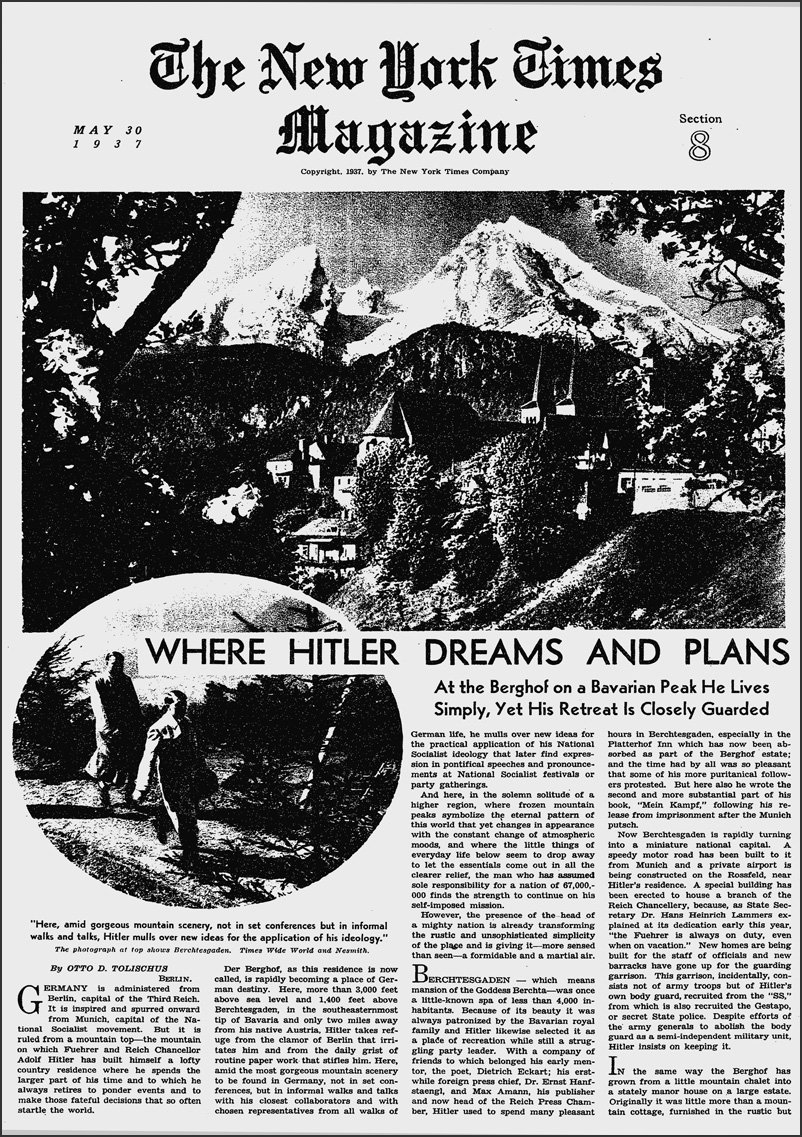 New York Times Magazine - placesjournal.org
New York Times Magazine - placesjournal.org
Italian dictator Benito Mussolini made Time's cover as early as 1923 and again in 1926, with the magazine praising his "remarkable self-control, rare judgment, and the efficient application of his ideas to solve existing problems."
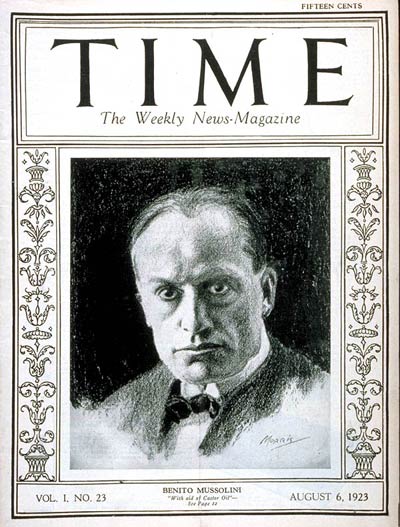 Time - time.com
Time - time.com
The 1926 cover was even more glorifying, portraying him petting a tiger.
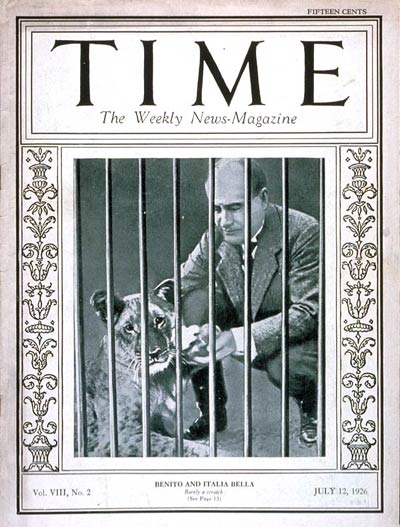 Newsweek - time.com
Newsweek - time.com
Hitler received his first Time cover on December 21, 1931, with the Nazi Party gaining power through brutal street fighting and the power of Hitler's oration. Time showed Hitler in the midst of a speech with fists raised in the air and the caption "Right Hand in Hand with Might!"
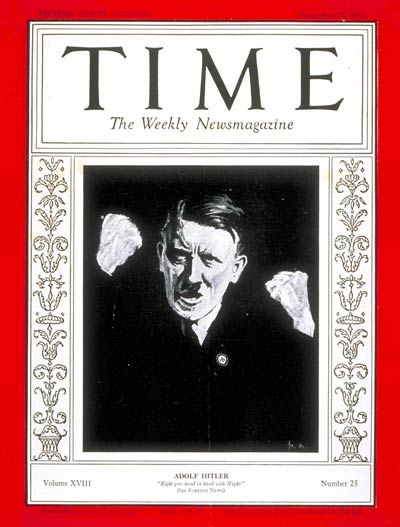 Time Magazine - time.com
Time Magazine - time.com
In Japan, militarism was on the rise, but Time first showed Emperor Hirohito in 1932 as the "Son of Heaven" wearing traditional robes.
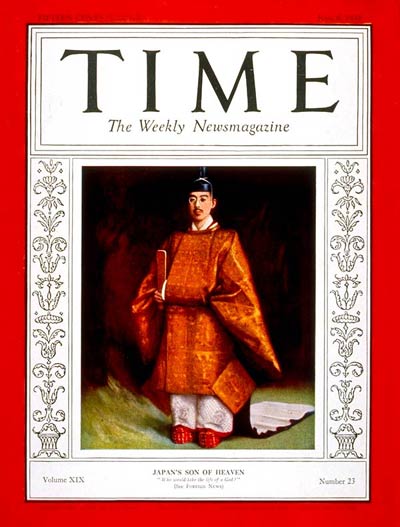 Time Magazine - time.com
Time Magazine - time.com
On January 30, 1933, Hitler was named Chancellor of Germany by President Paul von Hindenburg. Time showed him relaxing in a brown uniform with a stern expression and a dog behind him. The caption for the photo, "Keynote: Rebirth or Bolshevism," referenced Hitler's speech a few days later that proclaimed Germany would either rise from the ashes of its post-World War I humiliation or fall to the specter of Marxism.
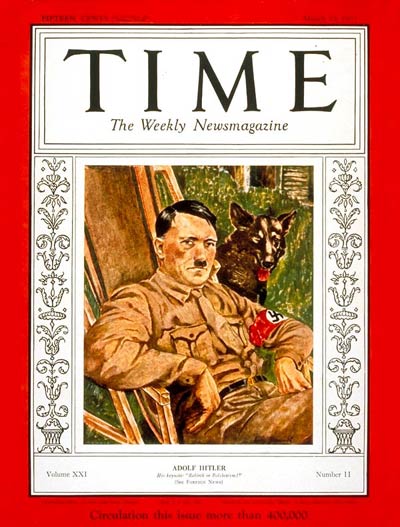 Time Magazine - time.com
Time Magazine - time.com
By 1939, though, Time seem to have caught on. In its "Man of the Year" issue (the honor of the year's most noteworthy newsmaker) was bestowed on Hitler, in an article that called him ruthless, barbaric, and "the greatest threatening force that the democratic, freedom-loving world faces today."
The transformation was completed by a disturbing cover by Austrian exile Baron Rudolph Charles von Ripper: This time cover depicts an "unholy organist playing a hymn of hate" on an instrument covered in hanging corpses.
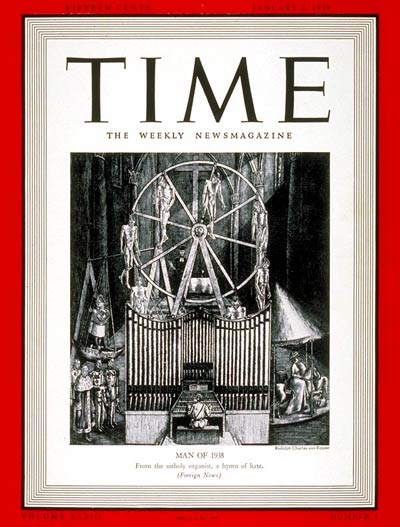 Time Magazine - time.com
Time Magazine - time.com
Time wasn't the only magazine that looked upon Hitler first as an amusing sideshow, then as a vicious dictator.
The Saturday Evening Post, one of the most popular weekly magazines of the time, gave him his first cover mention in a July 1940 story called "Who Was Hitler?" But in its usual custom, it used an unrelated painting for its cover. The picture was called "Kids Riding Trolley" and featured two children.
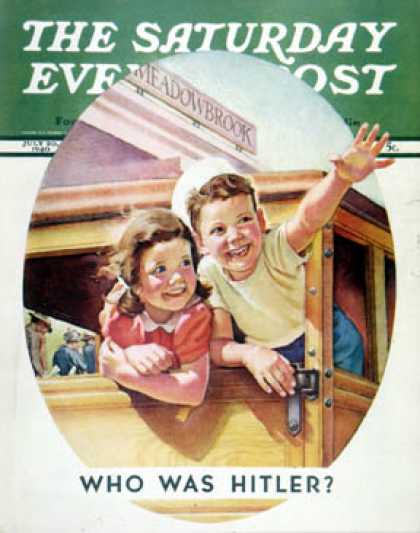 Saturday Evening Post - coverbrowser.com
Saturday Evening Post - coverbrowser.com
By 1943, the Post openly mocked the German dictator, portraying him a child with a comb for a mustache and again as a failed conqueror whose dreams are being torn down.
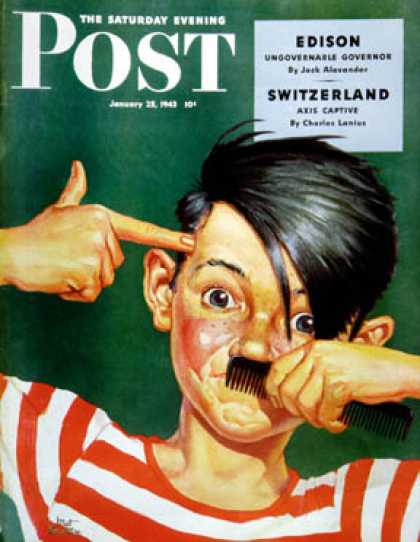 Saturday Evening Post - coverbrowser.com
Saturday Evening Post - coverbrowser.com
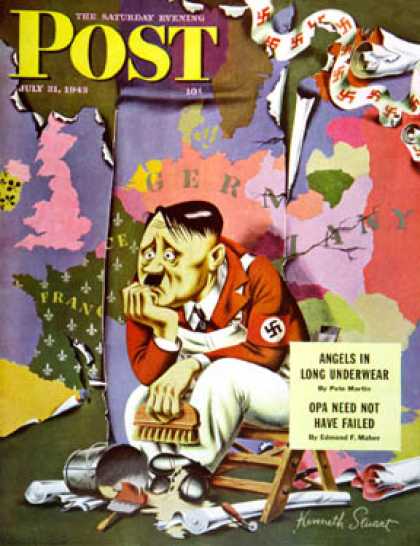 Saturday Evening Post - coverbrowser.com
Saturday Evening Post - coverbrowser.com
Newsweek followed a similar trajectory, with a June 1934 cover showing him and Mussolini strutting triumphantly, with arched backs and smug smiles.
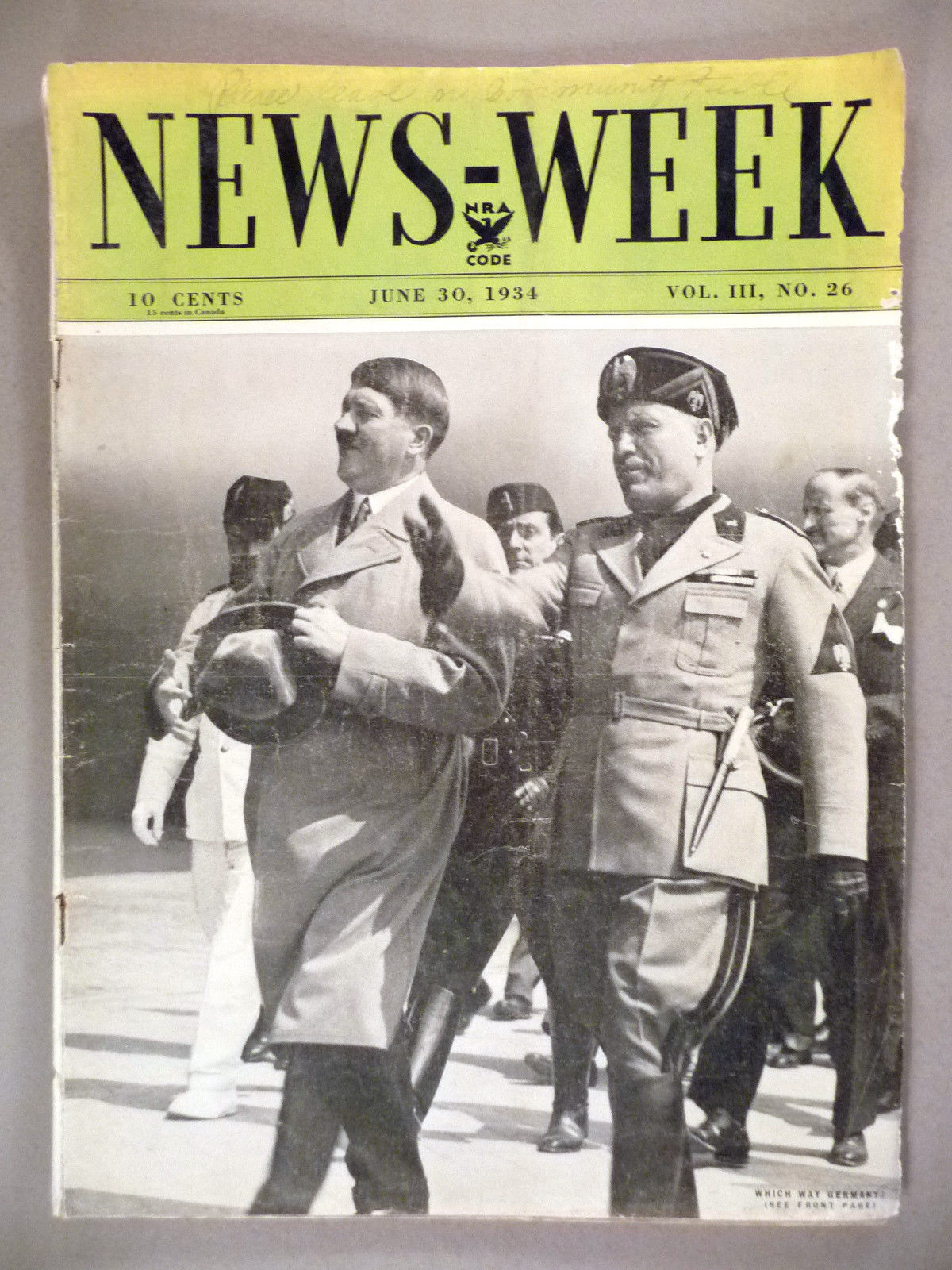 Newsweek - ebay.com
Newsweek - ebay.com
In 1939, Newsweek printed a cover portraying Mussolin holding his nose with the caption, "Duce Defies Democracies by Albanian Invasion"
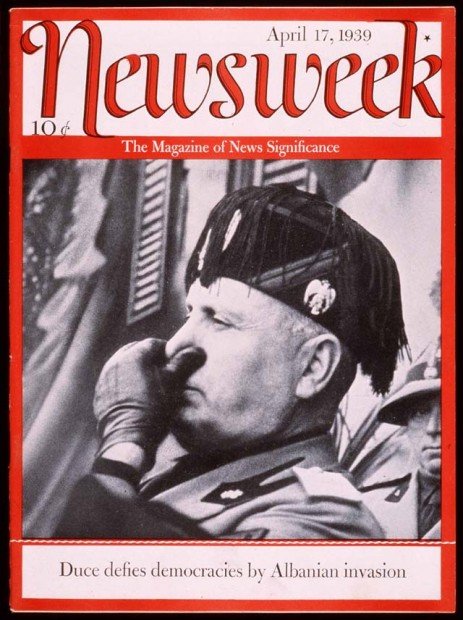 Newsweek - delawarereason.com
Newsweek - delawarereason.com
But as the war dragged on and turned against Germany and Italy, Newsweek joined in the mockery of its fellow publications.
The Allied landing in Italy in September 1943 led Newsweek to show a bedraggled Hitler, forelock handing down his head, with the caption "Little man, what now?" This was also the title of a popular German book written just before Hitler's rise, and it's likely the Newsweek audience would have known that.
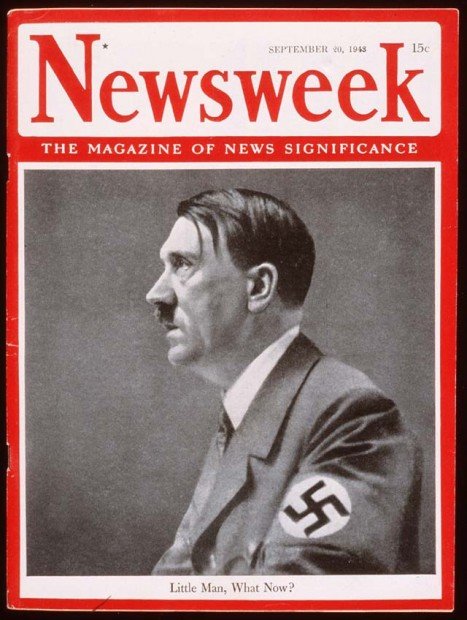 Newsweek - delawarereason.com
Newsweek - delawarereason.com
The final major magazine cover showing one of the Axis leaders was published on May 7, 1945, shortly after Hitler's suicide. It was a fitting image, the dictator with a bloody red X drawn over him.
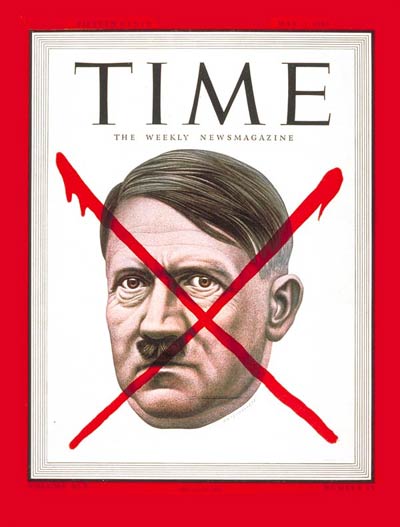 Time - time.com
Time - time.com
